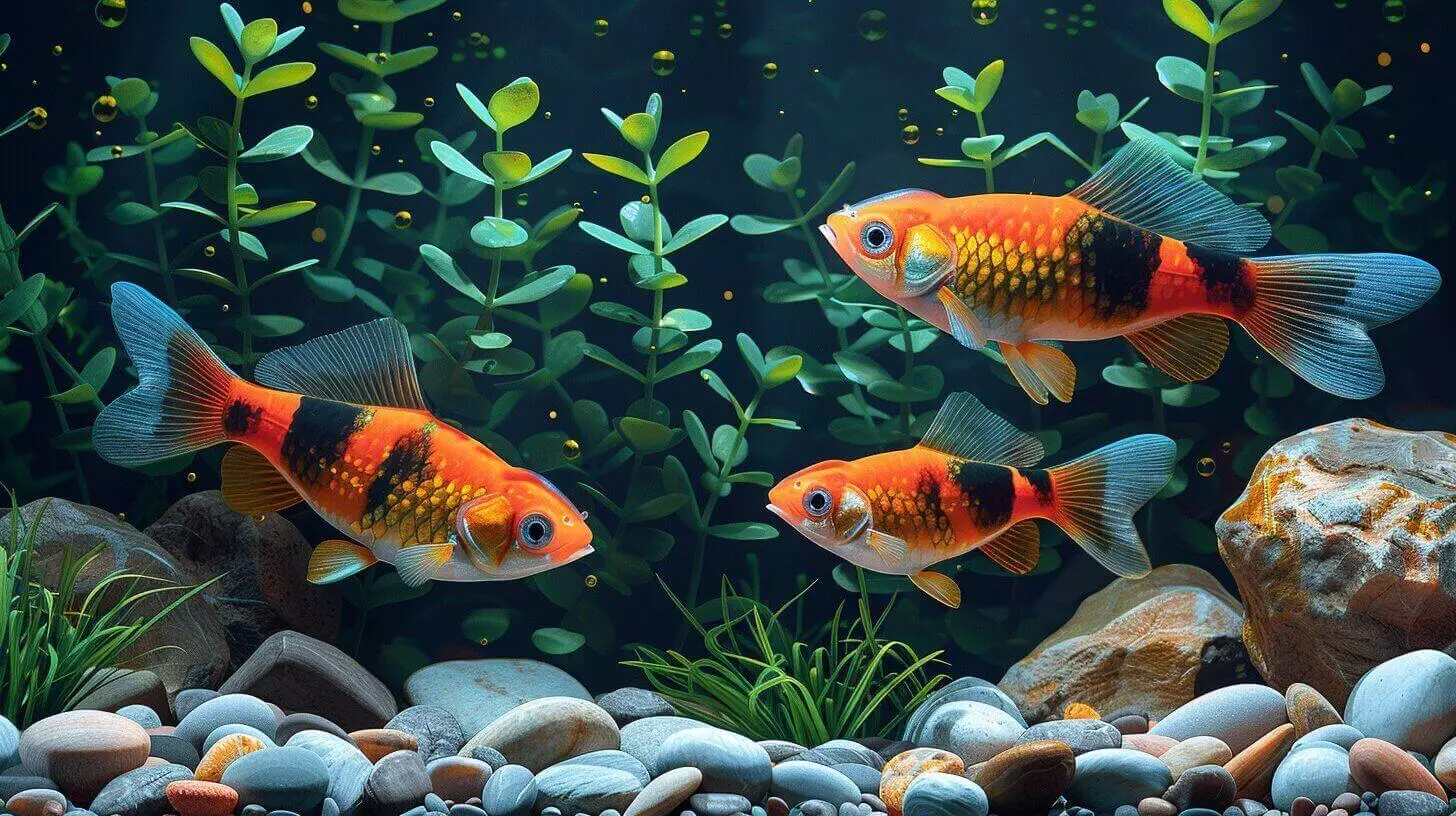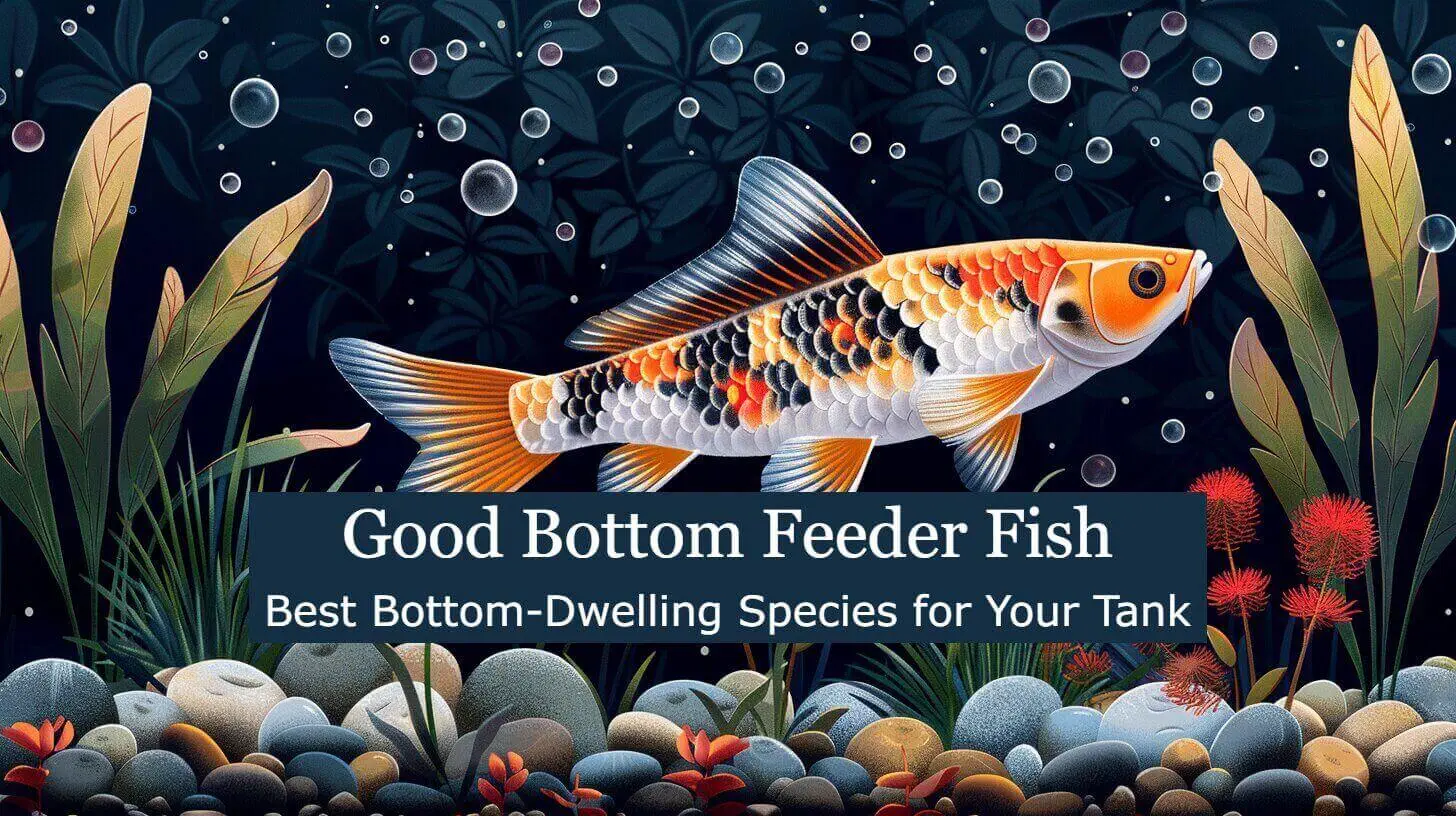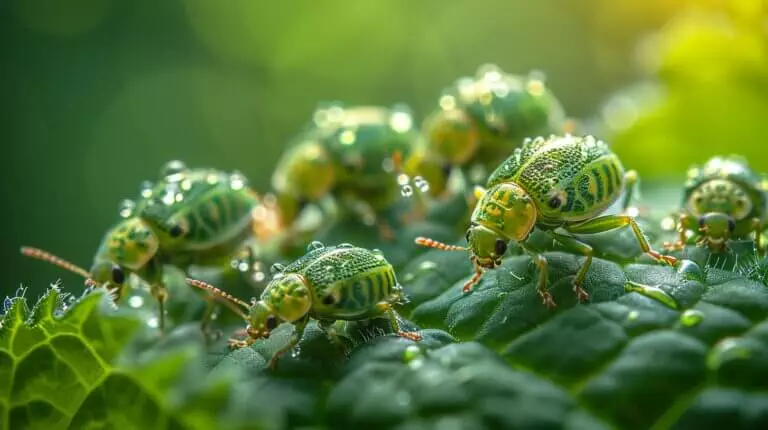When you’re considering a good bottom feeder fish for your aquarium, loaches stand out as a top choice. Their unique colors and lively behaviors can add both visual appeal and functionality to your tank. Species like the clown loach and kuhli loach not only scavenge uneaten food but also create a lively atmosphere. However, there are specific care requirements and environmental conditions that can help these fish thrive.
Curious about which loach species might best suit your setup? Let’s explore the options and discover how to create the ideal habitat for your new aquatic companions.
Key Takeaways
- Zebra Loach: Active and social, great for medium to large tanks, and helps maintain tank cleanliness.
- Clown Loach: Thrives in groups, ideal for larger setups, and effective at controlling algae growth.
- Kuhli Loach: Peaceful, prefers hiding spots, and suitable for smaller tanks while scavenging for leftover food.
- Corydoras Catfish: Hardy and friendly, excellent for community tanks, contributing to overall tank health.
- Group Dynamics: Keeping loaches in groups promotes social behavior and reduces stress, enhancing their well-being.
Understanding Loaches: An Overview

Loaches are fascinating bottom-dwelling fish that add both color and personality to your aquarium. As a fish keeper, you’ll appreciate their playful nature and adaptability.
Loaches thrive in various habitats, typically preferring soft, sandy substrates and plenty of hiding spots like rocks or plants. This creates a welcoming environment, allowing them to feel secure while exploring their surroundings.
These peaceful community fish come in several species, each with unique characteristics and behaviors. Some popular options include the clown loach and the yoyo loach, both known for their lively antics and compatibility with other fish.
Loaches not only enhance the visual appeal of your tank but also contribute to its health by scavenging leftover food and cleaning up debris from the substrate.
When considering loaches for your aquarium, remember to provide ample space and a well-planted habitat. They thrive in groups, so aim for at least three to guarantee their happiness.
Best Bottom Feeder Fish for Your Aquarium

When you’re looking to enhance your aquarium, choosing the right bottom feeder fish can make a world of difference. Bottom feeder fish not only keep your tank clean but also add character to your aquatic environment.
If you’re weighing loach species, here are some of the best options for various tank sizes and community tanks:
- Zebra Loach: Great for medium to large tanks, they’re active and social.
- Clown Loach: Ideal for larger setups, these charming algae eaters thrive in groups.
- Kuhli Loach: Perfect for smaller tanks, they’re peaceful and love to hide.
- Corydoras Catfish: A fantastic choice for community tanks, these bottom feeders are hardy and friendly.
Selecting the right bottom feeders can help maintain a balanced ecosystem while keeping your tank vibrant. (aquascape.guru)
Remember to evaluate your tank size and the compatibility of these loach species with your existing fish. By choosing wisely, you’ll create a thriving habitat that showcases the beauty of your aquatic community. Enjoy the freedom of creating a diverse and dynamic aquarium!
Care Tips for Keeping Loaches in Your Fish Tank

Caring for your loaches requires attention to their specific needs, guaranteeing they thrive in a healthy environment. Start by providing an ideal tank setup with plenty of space and structure. Loaches love to explore the bottom of the tank, so include rocks, caves, and plants for them to hide in. Adequate hiding spots reduce stress and promote natural behavior.
When it comes to feeding your loach, offer a varied diet that includes sinking pellets, frozen foods, and occasional treats like bloodworms. Observe your loaches during feeding to verify they’re getting enough.
Maintaining water quality is vital for loach health. Regularly check parameters like pH, ammonia, and nitrate levels. A good filtration system and routine water changes will help keep the environment stable.
Here’s a quick reference table for your care tips:
| Care Aspect | Recommendations | Notes |
|---|---|---|
| Tank Size | Minimum 20 gallons | Larger tanks are better |
| Hiding Spots | Caves, plants, driftwood | Reduce stress |
| Diet | Sinking pellets, frozen food | Variety is key |
| Water Quality | Regular testing | Aim for stable parameters |
Introducing New Loaches to Your Aquarium

Introducing new loaches to your aquarium can be an exciting process, but it requires a careful approach to guarantee a smooth change. Start by ensuring the compatibility of your new loaches with your current tank mates. You’ll want to keep an eye on their interactions right from the start.
Here are some key steps:
- Quarantine: Always quarantine new loaches for at least two weeks to monitor for any diseases.
- Introduce Gradually: Add them to the tank when lights are low to reduce stress and aggression.
- Observe Interactions: Watch closely for signs of compatibility and stress. Look for peaceful behavior and avoid any bullying from larger fish.
- Behavioral Considerations: Be mindful that loaches prefer to be with their own kind, so consider adding a few to promote a natural social dynamic.
Recap of Key Points About Loaches and Aquarium Care

Loaches are fascinating bottom feeders that can add both beauty and activity to your aquarium. These peaceful fishes serve as excellent scavengers, helping keep your tank clean while also providing a lively presence. If you’re a beginner fish keeper, loaches are a fantastic choice due to their hardy nature and friendly demeanor.
Here are some key points to remember:
| Key Point | Description |
|---|---|
| Compatibility | Loaches thrive with other peaceful fishes. |
| Tank Conditions | Maintain stable water quality and temperature. |
| Diet | They enjoy a varied diet, including sinking pellets and veggies. |
When introducing loaches to your fish tanks, verify you’ve researched the specific species, as they can have different care requirements. By understanding their unique needs, you’ll create a thriving environment where these playful scavengers can flourish. Don’t hesitate to explore additional resources for aquarists interested in loaches, as they can offer expert recommendations and tips.
With the right preparation and care, your loaches will not only enhance your aquarium’s aesthetic but also contribute to a balanced ecosystem. Enjoy the freedom of fishkeeping with these delightful creatures!
Conclusion
To summarize, loaches make fantastic bottom feeder fish for your aquarium, adding both color and activity. With species like clown loaches and kuhli loaches, you can create a lively community tank that benefits from their scavenging habits. Just remember to provide plenty of hiding spots and maintain good water quality. By following care tips and properly introducing new loaches, you’ll enjoy a thriving aquarium that showcases the unique charm of these engaging fish.
FAQs
1. Can Loaches Coexist With Other Bottom Feeder Species?
Yes, loaches can coexist with other bottom feeders, but it’s crucial to choose compatible species. Monitor their interactions to guarantee harmony, and provide enough space and hiding spots to reduce potential territorial disputes.
2. What Is the Ideal Tank Size for Loaches?
The ideal tank size for loaches is at least 20 gallons. This gives them room to swim and explore. Larger tanks promote better water quality and help maintain a peaceful environment for your aquatic friends.
3. Do Loaches Require Special Feeding Diets?
Loaches don’t require special diets, but they thrive on a varied menu. You’ll want to offer high-quality pellets, frozen foods, and occasional veggies to keep them healthy and happy in your aquarium.
4. How Do I Identify a Healthy Loach?
To identify a healthy loach, check for vibrant colors, clear eyes, and active behavior. Avoid fish with torn fins or excessive hiding. Monitor their appetite; a consistent feeding response usually indicates good health.
5. Are Loaches Suitable for Beginner Aquarists?
Loaches can be suitable for beginner aquarists, but you’ll want to research their specific needs. They’re generally hardy, social, and add character to your tank, making them a great choice if you’re willing to learn.





